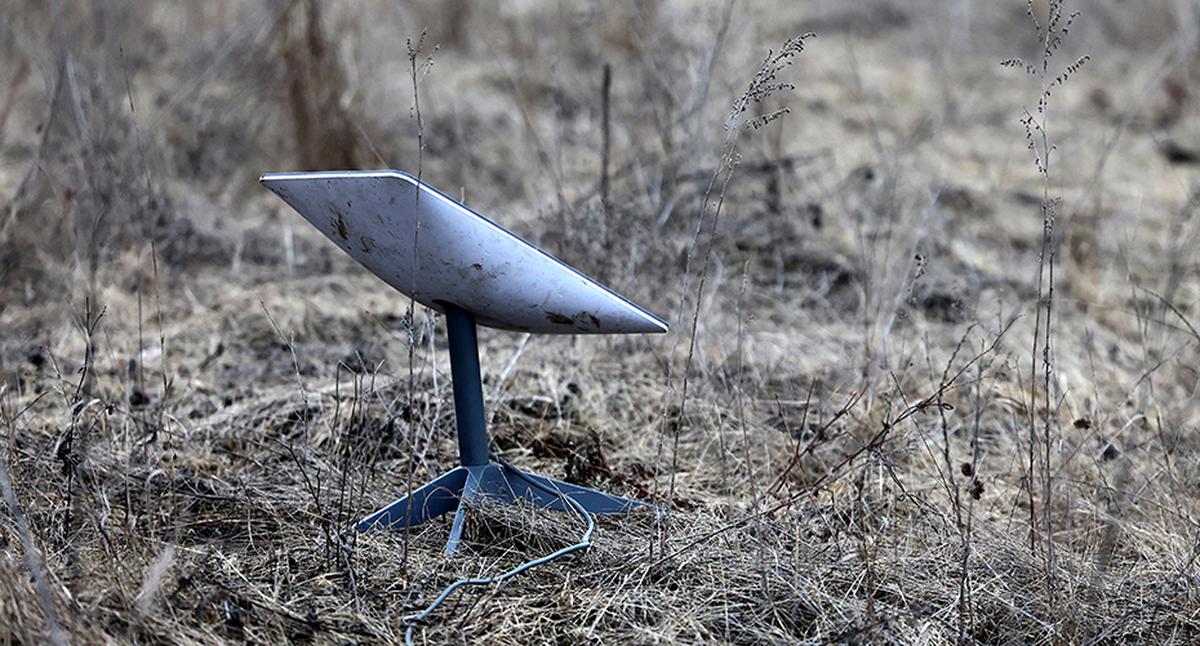Hours before Russia invaded Ukraine on February 24, 2022, Moscow used a malware to disable routers of Viasat, a U.S.-based satellite company, crippling Ukrainian militaryâs command system, and making it impossible to mount a defence.
Deputy Prime Minister Mykhailo Fedorov frantically reached out to Tesla CEO Elon Musk, via platform X, formerly Twitter.
Mr. Fedorov, in a tweet, requested the tech billionaire to activate his low-Earth orbit (LEO) broadband service, Starlink, in the country. In response, Mr. Musk said: âStarlink service is now active in Ukraine. More terminals en route.â
Within a few days, Musk-owned SpaceX began shipping Starlink terminals to Kyiv. The rectangle-shaped receivers have since played a crucial role in assisting Ukraineâs armed forces gain advantage over Russian invasion forces in a conflict seen as one of the biggest warfare since World War II.
But recent reports suggest Kyiv is surreptitiously being outmanoeuvred by Moscow as Russia is allegedly procuring Starlink terminals indirectly from private sellers in Arab countries and using them in occupied Ukraine.
Separately, Lt. Gen. Kyrylo Budanov, Ukraineâs top military-intelligence officer, told the Wall Street Journal that Russia is using thousands of Starlink receivers, and the network has been active in occupied parts of Ukraine for âquite a long time.â
Mr. Budanovâs claim suggests Moscow is buying Starlink dishes at a scale that could undercut Ukraineâs major battlefield advantage.
While both Russia and SpaceX have denied reports of buying or selling Starlink terminals to each other, such allegations underscore the rocky relationship between Ukraine and Starlink, a service owned by the worldâs richest man.
A swarm in space
In 2019, when Mr. Musk launched Starlink, a satellite swarm, his idea was to provide space-based Internet to people in remote parts of the world. Each LEO satellite in the network has a mass of about a quarter tonne, and they are positioned on the geosynchronous equatorial orbit, at about 550 km above the earth, surrounding the equator.
This positioning enables the satellite swarm to transmit data to the terminals located on the ground consistently, and during all weather conditions. The space company plans to deploy a total of 12,000 satellites in the short-term, and possibly increase the constellation size by another 30,000 LEO satellites in the long-term.
As on February 16, 2024, SpaceX has 5,459 Starlink satellites in orbit, out of 5,850 launched, per data maintained by space historian and astrophysicist Jonathan McDowell.
Starlinkâs constellation delivers high-speed Internet that supports streaming and video calls. Such capabilities, particularly on the battlefield, provide strategic advantage to the military by connecting defence forces to uninterrupted, secure communication channels and helping them deploy state-of-the-art weapon systems.
Ukraine said last year that about 42,000 terminals were being used in the country by the military, hospitals, and aid organisations. The military uses Mr. Muskâs satellite Internet to connect drones, coordinate artillery fire systems and attack Russiaâs positions. Once when Moscow attempted to jam and cut Ukraineâs access to the Internet service, SpaceX countered the sabotage effort by tightening its software.
Taking the tab
All this support comes at a cost, which per Mr. Muskâs October 2022 estimate is about $20 million a month. He also said his company could not support Ukraineâs Starlink needs âindefinitelyâ for free. [SpaceX contributed about half of the cost of Terminals and services it provides. Rest came from private donors and U.S. aid agency.]
Mr. Muskâs comment on who will foot Ukraineâs Starlink bill came at a time when relationship between Kyiv and SpaceX owner was starting to sour as the billionaireâs twitter post on urging Ukraine to seek a negotiated solution with Russia and cede Crimea for good brought him the ire of Ukrainians.
Mr. Musk later backtracked and said the company would pay for Starlink service. Eventually, in June 2023, the Pentagon signed a contract with SpaceX to supply Starlink service to Ukraine.
Complicated relationship
At another point during the conflict, things got complicated between Mr. Musk and Ukraine when Kyivâs request to access Starlink to attack a Russian naval fleet in Sevastopol in Crimea was denied by the company as Mr. Musk did not want to be seen as an enabler of escalation in conflict.
Details on why Mr. Musk felt this way came to light in a recently released biography of the billionaire by Walter Isaacson, in which the Tesla CEO says he believed an attack on Crimea would lead to a nuclear response by Russia.
The book further describes how Starlink turned off connection near the coast of the Russia-occupied Crimea as Ukrainian drones were approaching Russian warships, resulting in âlost connectivity.â
Starlink has played a pivotal role in helping Ukraine mount a strong defence against Russian invasion forces. But Mr. Muskâs changing perspective on the war makes it difficult for Kyiv to call it a fully reliable service. Now with Russia allegedly gaining access to the terminals, Ukraine finds itself on the back foot once again.
month
Please support quality journalism.
Please support quality journalism.

Tyler Fields is your internet guru, delving into the latest trends, developments, and issues shaping the online world. With a focus on internet culture, cybersecurity, and emerging technologies, Tyler keeps readers informed about the dynamic landscape of the internet and its impact on our digital lives.


